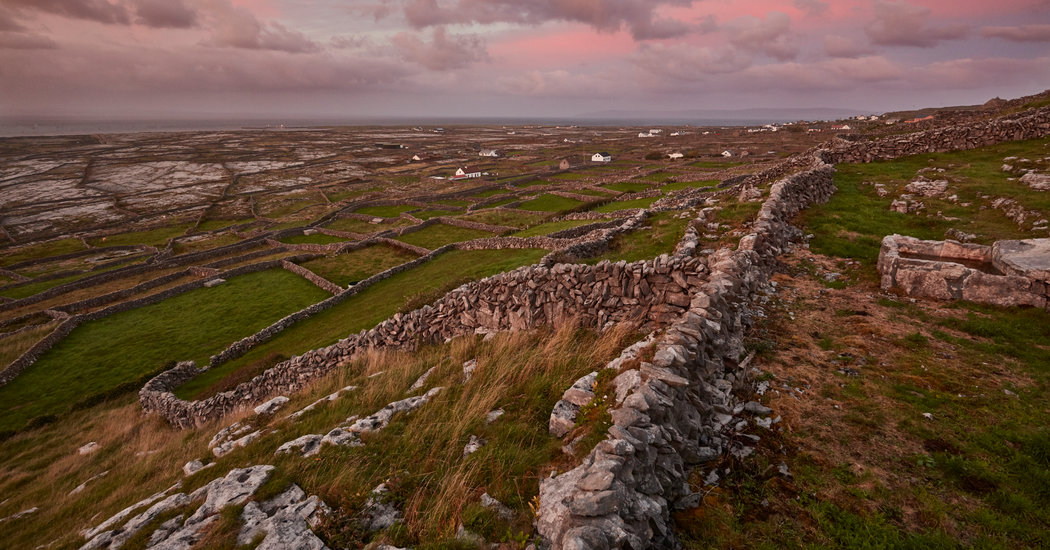
As on Inishmore, the day tourist trade had taken hold. There were horse and trap rides, coffee carts and stands selling local fudge. But just beyond the flurry of town, Inisheer, with its 250 residents, is perhaps the most physically picturesque of the three Aran Islands, and its three square miles make it easy to navigate on bicycle. (Bikes were readily available directly off the ferry on both Inishmore and Inisheer. Not surprisingly, there was no bike rental on tourist-averse Inishmaan.)
Atop the island’s highest hill, beside the ruin of O’Brien’s Castle, Aine O’Graiofa had put a few tables out in front of her home and called it a restaurant. I took a seat in the driveway and settled in for one of Ireland’s staple country lunches — ham and cheese on toasted white bread — while looking down across Galway Bay to Connemara in the distance.
Inisheer boasts three pubs, one shop and a single church.
“The priest died four years ago and they haven’t sent another,” Ms. O’Graiofa told me. “We’re left to our own devices.”
We chatted of the decline in the church’s dominance over the people throughout Ireland.
“Sure it’s their own fault,” she said. “We have the old schoolteacher who goes up and leads folks in the rosary; that’s all we need.”
Watching a ferry cross the bay down below, I asked if it was heading for Inishmaan.
“I doubt it. You go over there and you don’t see a soul; they’re all hiding behind the stones.”
We laughed, but soon enough I made my way down to the dock.
BACK ON INISHMAAN I WALKED past the old graveyard from which Synge took inspiration for his play “Riders to the Sea” and continued up the hill, across from Synge’s cottage and up over five stone fences and through five small fields to the ring fort of Dun Chonchuir. Synge would “often stroll up there after a dinner of eggs or salt pork, to smoke drowsily on the stones.”
Like Synge, I had sat on these walls and viewed the sea in nearly every direction, but on this evening, a fog rolled in. The air became moist. Summer changed to autumn in a matter of minutes. I could barely make out the far end of the small fort enclosure. With no wind, a heavy silence hung in the mist. The century that separated me from Synge seemed suddenly trivial, and a world beyond these dry-stone walls might not even have existed.






